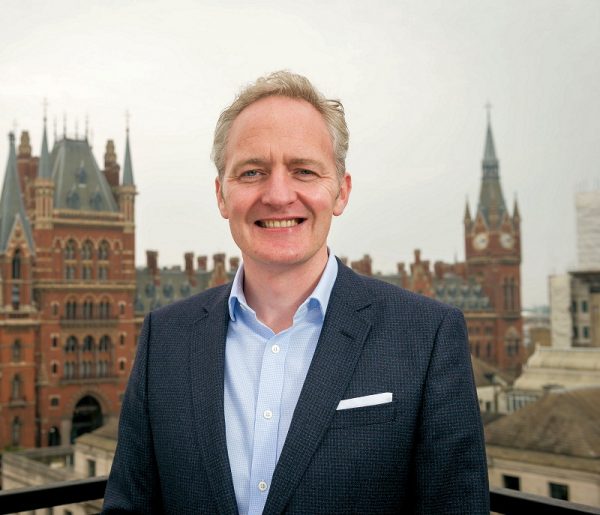Interview – Openreach on UK FTTP Rollout, Competition and Future Plans

Question 7. Build costs are a key point, not least since the Government has proposed to invest £5bn of public money in order to help “full fibre and gigabit-capable broadband” reach every home in the UK by the end of 2025. The focus of this new investment is targeted at the hardest to reach final 20% of premises (mostly disadvantaged rural and some suburban town / city areas).
However we know that even major national operators like Openreach have been finding it difficult to make economic models, subsidised or not, that work for the most remote rural areas – where costs tend to spiral disproportionally away from viability (e.g. BT’s follow-on Superfast Cymru contract for Wales was significantly smaller than many expected, partly due to the issue of cost – here).
Nevertheless, in order to deliver on the Government’s commitment you may need to find a model that works in such remote areas. What sort of changes or framework would you like to see being created by the Government or elsewhere in order to make this viable, and might we see 5G being used to fill in some of those communities instead of FTTP?
ANSWER:
It is important that the framework for the £5 billion supports deployment from operators of all sizes. We’re working with DCMS and BDUK on what this framework might look like, but I think there are probably a set of principles which would help all operators to make credible bids for funds.
Question 8. Some alternative network providers are concerned about Openreach’s ability to rapidly overbuild their fledgling “full fibre” networks in commercially competitive urban areas, while at the same time also putting added pressure on their economic / investment models through price discounting at wholesale.
How do you respond to those concerns and could Openreach be doing more to avoid altnet FTTP platforms, or is that simply a fact of the aggressively competitive market?
ANSWER:
The Government and Ofcom have set a very clear policy which encourages infrastructure competition, and we’re totally on-board with that.
In terms of how we think about where we build, we weigh up a huge range of factors and we’re not really focussed on what others are doing. We’re just getting on with our own job, building fast, to a really high quality and honing our techniques to get our costs down and speed of deployment up.
We also publish our build plans every quarter, showing where we’re going to be building 18 months in advance. So we’re very transparent about all that and I’m not aware of any other network builder that lays out that kind of detail.
Indeed, as other operators expand their footprint, there may well be a case for others to declare their build plans as well in order to reduce overbuild.
In terms of pricing, we’re a regulated business – so as you’d expect we’re very conscious of our obligations when it comes to protecting competition in the market. We’re very confident that every offer we launch into the market continues to safeguard equivalence and competition.
Question 9. Outside of FTTP it’s noted that the other primary way in which you’ve been delivering “ultrafast broadband” (100Mbps+) to consumers over fixed lines has, until recently, been via hybrid fibre G.fast technology. The deployment plan for this service has been dramatically scaled-back over the past couple of years (originally intended to cover 10 million premises) in favour of FTTP.
At the last count G.fast covered about 2.5 million UK premises and is predicted to reach 2.73 million by March 2020. However the technology is currently under review and many people, ourselves included, expect that it won’t go much further after March (here).
Can you tell us if any decisions have now been made about G.fast and what its future holds, if any? Likewise, do you still expect to hit 2.73m by March as previously indicated?
ANSWER:
Sales of Gfast are now ramping up – partly thanks to the volume discount deal that we did with customers a year ago – and the feedback we’re getting from customers who’ve adopted Gfast is very positive. So it’s a great, relatively low cost, way to test the appetite of consumers for ultrafast speeds and it’s going pretty well.
But you’re right that our future plan for Gfast is under review (and still is) in the light of our decision to go focus on FTTP. It will certainly be a smaller part of the mix in future because building FTTP is our core focus, but Gfast is still there.
Question 10. Earlier this year we caught wind of Openreach proposing to create a new range of symmetric speed 1Gbps products via FTTP for UK businesses. Can you tell us if any progress has been made on this and when it might make it into the wild, if ever?
ANSWER:
We did talk about a range of new symmetric products and, subsequently, we are now planning to trial potentially both a 500Mbps symmetrical and a 1Gbps symmetrical product as part of a FTTP for Business trial in the new year. I can’t say more than since this is at a very early stage and we’re currently speaking to our wholesale customers about the exact detail of the product.
Question 11. Openreach (BT) has previously spoken about the potential impact of Brexit upon your supply chains, which could hit the cost of building the new full fibre networks and create other problems. If the UK does leave the EU next month then what kind of changes or measures do you want to see in order to keep everything going smoothly for Openreach?
ANSWER:
There’ s a risk Brexit could have an impact on our supply chains but we’ve been working closely with Government and business groups to prepare for any scenario that may affect our business, people and customers, and we have contingency plans in place, for example the stockpiling of equipment & components.
We’re in a strong position to cope with any labour supply headwinds – we’ve hired 6,500 engineers over the last two years, and they’re being trained at our 12 new schools dotted across the UK. They’re part of a 33k strong team, but achieving the government’s ambition requires a huge civil engineering programme which will need an even bigger skilled workforce across the whole industry. It’s vital that we and our civil engineering suppliers can continue to get access to the right people – even if they’re from outside the UK.
Question 12. The new 10Mbps USO is due to be introduced from March 2020 (here). At present it’s widely expected that the majority of this will be catered for via 4G from BT, although around 40,000 premises may still be delivered via a “fibre” (FTTC or FTTP) service. Do you have any idea how much of this may end up being delivered via FTTP specifically?
ANSWER:
The 40k figure was our initial estimate during the consultation phase with Ofcom – which was based on our view of what the sub 10Mbps landscape looked like. We’re now working with a data update from Ofcom to refine this view.
It’s difficult to say how much of whatever that number will finally be will be delivered via FTTP although our expectation is that in many cases full fibre will be the most efficient technology choice.
We will look at all the premises that fall below Ofcom’s cost limit and assess whether FTTP can be a viable solution for them or not.
Question 13. Finally, nationalised free full fibre for all.. you game 🙂 ?
ANSWER:
Well, I think that decision was made for us last week by the Great British public 😊. But seriously, it’s great to see broadband being discussed as a major campaign issue by parties of all political persuasions, and it underlines our belief that full fibre broadband can turbo charge growth in prosperity for the entire UK.
It also proved how important Openreach and more than 600 Communications Providers are to people’s lives and confirmed what we already knew, that delivering full fibre as far and wide as possible should be a priority for the private and public sectors. It’s very clear that businesses and government need to work together over the coming years to achieve the lofty ambitions we’ve set ourselves.
We’d just like to thank Kevin Murphy for being so good as to answer our questions so quickly and to wish him a Merry Christmas and Happy New Year for 2020.
Mark is a professional technology writer, IT consultant and computer engineer from Dorset (England), he also founded ISPreview in 1999 and enjoys analysing the latest telecoms and broadband developments. Find me on X (Twitter), Mastodon, Facebook and Linkedin.
« Openreach’s FTTP Broadband Build Hits 2 Million UK Premises
Openreach Blocking Copper Broadband at UK New Build Sites »
Latest UK ISP News
- FTTP (5514)
- BT (3514)
- Politics (2536)
- Openreach (2297)
- Business (2262)
- Building Digital UK (2244)
- FTTC (2043)
- Mobile Broadband (1972)
- Statistics (1788)
- 4G (1663)
- Virgin Media (1619)
- Ofcom Regulation (1460)
- Fibre Optic (1395)
- Wireless Internet (1389)
- FTTH (1381)





























































why didn’t you ask him how many houses actually have fibre? Homes passed are not connected and a lot of work needs to be done to connect them physically to a fibre.
2 millions property have been completed.
@CC- is this your latest obsession? It’s all about the number of properties that can place an order and actually be connected, as you know.
Nice try…
He would simply have referred to the figures in the last quarters financial statement
Fibre to the Premises number of connections at 404,000 up 52,000
From a premises passed of 1,810,000
So a take-up of 22.2%
Mark and I both covered this at the time the figures were published in October 2019.
Believe its also been mentioned to you in response to your comments before too.
Fair question – not aware myself – are all 2 million premises able to place an order for FTTP service today? Plus get connected by standard install i.e. no further network build/adjustment?
@Neb – what else would it mean? It means you can order, which is what matters.
The question is another failed attempt by CC regarding BT/OR.
There are discussions to be had on take-up rates, and it does NOT look good for those saying Gigabit was needed yesterday because public where it is available commercially are invariably sticking with their existing services.
Where it differs is the ground people like B4RN are doing, where nothing else exists or its so slow B4RN arriving is the first time people have an option that will stream HD video. Hence why B4RN take-up rates are in the 65% and higher region if I recall their figures correctly.
I’d just be happy that a good connection is available and easily upgradable.
Well done OR – keep building faster.
The bit that stinks is that it is only costing £5Bn to do half the country with FTTP and that is not much at all amortised over 25 years of earn out. Or even much of a spend for BT – instead BT blew more money than this on various grandiose plans financed by sucking money from OR. So this could and should have been done years ago.
Or even if the original FTTP (follow on from FTTC) plan had been stuck to of a more gradual roll out over 10 years or so we would be in a different place now.
And as a BT shareholder the recalcitrant capital investment has cost BT market share/shareholder value and UK PLC productivity.
Still better late than never.
@AF “it does NOT look good for those saying Gigabit was needed yesterday”
The 1G right now case was always marginal. However there is a small and growing market for it – some people do use VM or Alt Nets for precisely those reasons. OR and it’s resellers has exited that market by not playing at all. So it may take time to establish uptake patterns.
However the data growth usage curve argument still looks pretty solid.
However there is more to a connection than raw speed. Reliability low latency and low maintenance running costs are also important FTTP advantages both for provider and consumer.
It also uses less power so less carbon footprint in the running.
It’s almost always far less work to connect a home to Openreach FTTP than B4RN.
No breaking into a duct to get a fibre out of it, digging a trench to get to a property, possibly hundreds of feet, then repairing the duct. Either running a new drop cable overhead, little different from connecting a new copper line, or a fibre underground, same as copper.
Please stop with this. It isn’t doing anyone any favours. Arkenholme, your example of poles with fibre on them, is not listed as being passed by FTTP.
Be happy Openreach didn’t bother and left you guys to it rather than complaining about it. Take it as a compliment.
You’re wasting your time and, frankly, making B4RN and anyone who agrees with this look like tools. Undermines the good work done when the faces of it are being obnoxious and ignorant.
Why – the figures around how many people can order are what is of interest.
The take up rate might not be high, but prices will come down (reducing barriers) when there is more competition across ISPs and 4K and other bandwidth heavy technologies become more main stream (driving up demand).
This is a new network that will be used for decades and may in the next decade or two see 10G or higher roll out. Talking about take up rate after a couple of years is rather short sighted.
@Oliver “Talking about take up rate after a couple of years is rather short sighted.”
Quite
Especially as these higher rates have not really been marketed yet.
Up to the summer this year it was pretty hard to order a Gfast line from anyone other than BT or Cerberus (yes I know there were others) so saying take up is poor when you cannot order it and it was not advertised and it wasn’t that widely available makes zero sense. Also it is unlikely that every ISP is going to offer Gfast and a lot will just jump directly to fibre. I think Aquis (somebody correct me if I dreamed that) are skipping Gfast to concentrate on FTTP.
The marketing of FTTP products is in a similar boat ATM – not many are offering it.
I’d say the better indicators are AltNet penetration with 1G/1G where OR offer FTTC. And I think Hyperoptic and Community Fibre will have useful evidence here.
If you are lucky enough to have full fibre to setup that new laptop, download your iPhone contents from iCloud on your new toy under the tree on Christmas Day or you experience that it can easily support doing that for several people at the same time and the 4K stream to the TV still works this is the kind of experiential marketing that sells high bandwidth.
Students will also get used to that sort of bandwidth at University and expect it in there homes.
@chris conder what on earth are you banging on about? That’s not how Openreach measure it and you know it! Their figures show people that can actually order and are connected to an enabled DP. If a CP orders it, Openreach will get it working.
Question 13 Q&A
🙂
Just a measly 2 million residents, BT you can do so much better than this
I’d be pretty happy with the build rate if it increases as announced.
BT/OR are on track to do something good for the country and ramping up does take time and effort.
And let’s not forget the Alt eta who are also delivering some decent numbers + VM project Lightening.
Overall build per month is now very healthy.
Key thing is to figure out how to keep things rolling in non commercial areas so that all the hard build up teams are not dispersed.
If you ever wonder why UK civils projects (think tunnelling) are so crazy expensive it is the near zero skill base and non existent formed teams so painful slow and expensive learning is carried. We then disperse the teams and repeat – madness. Let’s hope this doesn’t happen with fibre as a constant roll is key to getting the job done cost effectively.
“t present Openreach and other operators are benefiting from a 5 year holiday on business rates for new fibre lines, which rises to 10 years in Scotland. However operators often create payback models for full fibre that can run to 15-20 years, which conflicts with the limited 5 year relief.
Have you been given any indication whether the UK Government might be willing to extend the current 5 year relief on business rates for new fibre (assuming you’d want this, although we can’t see why you wouldn’t)?”
The answer to that should be obvious.
The final 5-10% should be done on a totally rates exempt basis. With conditions of spare backhaul fibres being run and available for 3rd party use. Justification is the social and societal benefit of digital inclusion.
The next 20% of difficultly should have a longer rates holiday of say 20 years
The segment over 50% to 75% is a bit more tricky as it is marginal and I would see less of a case for a very long holiday but maybe just follow the Scottish model and go to 10 years.
Eligibility for the rates holiday is then tied to build out rates; this makes sure that the cash is recirculated and not just trousered by the usual short term UK management think. When certain targets are hit the holiday becomes locked in so there is a massive incentive to keep building and get the job done.
These areas can be established from the A B etc market definitions or by tweaking them slightly.
The attraction is that it is a simple way of doing things using existing data.
I think that the purpose of the rates should review completely. Not only is it time consuming, in arrears, it could interfere with the decisions regarding an efficient and cost effective network design.
If the design criteria has to take into account an ongoing tax based on lit fibres then that could affect the design. e.g in the South East where we are building multiple homes on a postage stamp planning applications are being submitted, often well in advance. If existing homes need FTTP instead of providing a separate fibre which would also eventually cover the new build the designer may simply parent them on the nearest lit fibre and worry about the new build another day. On an individual basis this may be minimal but at a macro level its less money overall available for FTTP.
Also in overbuild areas we could have 3 or 4 providers all paying tax on their lit fibres even though some are running at different levels of utilisation. A single provider area will have a high utilisation but in urban the providers may all be paying rates on very low utilisation.
Surely a fairer and simpler method (that would also provide investment confidence) would be to have a comms levy or VAT differential on the core broadband product. The more capacity the consumer has the higher the fee. The higher the live capacity the more the network provider pays.
@Meadmoj
You need to be careful with incentives otherwise human nature is to game them.
If you use bandwidth all that will happen is that the ISP will sign up a service with free 8k movies.
Ultimately we all want get to a high % of premises passed quickly and therefore to incentivise that. No point in incentivising the commercial 50%z
Why the fuss on vouchers when there is 1) more than £660m in BT’s accounts on clawback, and 2) another 300k rural premises outstanding on existing contracts? and 3) unknown amounts of capital ourtsanding? Are there additional plans to tool up to do more than the 6k-7k premises a month currently being delivered in rural?
Would BT Group prefer to outline what is possible or hand the money back?
This 2016-17 Damascus conversion to full fibre has more than a forced conversion about it.
No doubt the Damascan conversion was forced by shareholders, competition & gov/regulator.
I don’t think it matters how the conversion occurred but BT’s corporate culture has changed. Fibre First is a big statement of intent.
And yes the recycling of BDUK and other monies will all play a part in getting to the 100% fibre goal. If you are correct with the gainshare and other funding already allocated plus Boris 5Bn then there is about £6Bn to spend on the hardest bits.
Not really. Change of people at the top. Competition in urban areas. Same reason as the push to modernise the networks and finally switch off legacy systems.
Nothing you mention is anything at all to do with the Fibre First program, the major contributor to the premises passed count.
@CarlT
The people at the top were changed because the shareholders had lost confidence. There was a lot of pressure from institutional investors and smaller investors to invest in fibre.
It is as simple as that.
Meadmoj- the ~£660m is recorded in the capital section of BT’s published accounts.
CarlT – your choosing to ignore as is this article a high level of normalised deviancy which meant FTTP in-fill activity was not resourced for rural while the legal requirement for BT to pay its capital contributions were gamed and timing of any payments continues to go unreported.
Meadmoj, there is unlikely to be any £5bn once the facts are understood. BT can get to 90% they say, and outstanding monies for all intents and purposes can deliver FTTP in-fill to another 500K plus the 300k already contracted but outstanding. You can find the latter in the BDUK spreadsheet.
I’m not choosing to ignore anything relevant, NGA.
You may see absolutely everything Openreach do through your Erin Brockovich lens, whatever makes you happy, I don’t.
If BT reneged on legal obligations, you are openly claiming they did, when does the court case begin?
You can either post here, coming across as a bit of a crank, and post self-referenced comments to Ofcom or, if you can prove this, you can get a court case running.
The more of the first thing you do the more you come across as either still bitter over your dismissal, years later, being on the autistic spectrum, or having an obsessive disorder.
Let’s see BT in court, Erin. Less posting here, more chat with a lawyer. Maybe even crowd funding.
CarlT .. just referencing BT’s accounts. Cranky a little, but the obvious needs pointing out.
@NGA – link to accounts please and which page?
‘the legal requirement for BT to pay its capital contributions were gamed’
That’s in the accounts?
The numbers I am aware of. They are exactly nothing to do with Fibre First.
If you can prove the above let’s see it. Extracts from the contracts where this obligation is stated would be good.
Timing of payments is an interesting one. You’re aware Openreach billed local authorities, so the bills to the authorities should have been to plug the gap after any Openreach contribution, right?
I believe monies owed are where Openreach overbilled and uptake meant either less or no gap funding was required.
This was what was explained to me by a local authority as how their contract run. Openreach built with their own resources then billed the authority the gap between their contribution per premises passed and actual costs. Openreach contributions were in kind, labour and materials, not cash.
Were they mistaken?
CarlT .. the deferral is in the accounts. The lack of capital payments you can pick up in the audit reports where payments are expected or yet subject to reconciliation. When challenged ‘paid’ becomes ‘expected’ or some other euphenism as late as the third report from Audit Scotland.
Gap Funding was a function of state aid. Best to start with 2013 – first NAO audit report gap funding for phase 1 clearly stated there.
A record of the capital payments are yet to be published. A response to the latest EFRA select Committee report is due. No information published to support the LDP explanation. State aid payments recorded not consistent with any forward payment by BT and the need to use or lose EU monies.
Fibre first is related in so far as it started after CMS Select Committee demanded separation of Openreach was needed due to lack of investment. Lack of investment was clear, less clear the status of the capital for BDUK at that time but it much was outstanding in 2016.
US water poisoning case took 25 years to resolve from when the poisoning occurred. 7 UK Select Committees inquiries are doing a little better than this. The law can be an ass.
Facts .. read the capital section for the deferral. No record of BT payments and BT stopped reporting state aid receipts some time ago, although work is outstanding for at least 300k premises.
@NGA – page number please in https://www.btplc.com/Sharesandperformance/Annualreportandreview/2019summary/assets/documents/BT_annual_report_2019.pdf
where is 300k premises listed?
A lot of text but zero answer. Why would Openreach be paying themselves to do work? Didn’t they simply bill the taxpayer for the gap funding?
Are you saying that the local authority I spoke with were mistaken or are you talking accountant?
The only monies I can see owed are Openreach refunding local authorities that have overpaid.
From your link: ‘Our BDUK Gainshare provision at the end of the year was £639m.’
Okay, we know what that is. BT setting aside money to refund local authorities as take up has been higher than expected.
‘This includes £213m grant funding deferral under the Broadband Delivery UK (BDUK) programme, of which £168m relates to a change in base-case assumption for customer take-up.’
I believe this is capital expenditure BT haven’t billed for due to higher take up expectations and other efficiencies. They have deferred claiming the available monies.
Which of these numbers indicate Openreach not paying for things?
Am I wrong about what grant funding deferral is? The local authority guy appears to also be quite confused. He evidently quite naively thought it related to Openreach either billing less than expected or not billing at all.
I’m lost as to where Openreach should apparently be billing themselves for work they have done.
As far as I can tell the BDUK programme was supposed to subsidise both capital expenditure and operational expenditure. I haven’t seen breakdowns however given over a third of the budget for the original commercial NGA programme was OpEx it is not unreasonable to assume the gap funded stuff also had a considerable operational expenditure.
With that in mind fixating purely on capital expenditure is misleading. Openreach would have been justified in recovering both capital and operational costs above commercial budget.
If things have been ‘gamed’ this is a failure of policy and government. As far as the law goes I haven’t been anywhere near as obsessed with this whole thing as you however I have literal interest in blowhard MPs. When they can actually prove things and have a remedy then I’ll be interested.
I’m aware of government calls for separation of Openreach. These have been ongoing for years. Ofcom make the decisions and it was Ofcom Openreach / BT pacified with increased ultrafast spend, largely G.fast.
It is, however, market forces and investor pressure that took that offer and radically increased it in scope. The initial offer was largely G.fast, the replacement with, apparently, all FTTP down to Openreach and BT Group management.
For all your touting of some mystical conversion BT were bigging up G.fast as the next big thing well after 2016.
Facts – look at the last BDUK sheet and compare contracted with delivered.
CarlT – The clawback has been subject to a lot of PR so its premise composition is unclear. Interactions with LBP suggested they were treating BT’s contributions as some type of gold at the end of the rainbow, something that might or might not be paid.
Being the season it is, it lends itself to a libretto between all 7/8 SOS and their junior ministers and chairs of select committees. Perhaps the legal setting you seek.
Is it paid? It is ‘contracted’! (WPQ)
Is it paid? It is ‘expected’! (Audit Scotland 2019)
Is it paid? It is paid (Vaizey – CMS inquiry 2016). Is it Paid? ‘We keep no record’. (WPQ – 2016-17)
Is it paid? It is ‘anticipated’! (CDS)
Is it paid? It will be ‘reconciled’!
Is it paid? It is paid! Are you sure? We have no record.
Is it paid? It has been ‘incurred’! (WPQ)
Is it paid? There are ‘underspends’! (WpQ)
Is it paid? It is paid? Are you sure? We have no record.
Is it paid? There is an investment fund!
Is it paid? I am not complacent! (Min James)
etc..
I apologise for my apparent ignorance but ask again: why would Openreach be paying themselves for work they are undertaking?
If contracts failed to stipulate BoMs and labour costs needing to be broken down and allocated to different cost centres that’s a failure of the contracts.
The other stuff seems to refer to deferral, which was never paid to BT in the first place, and gainshare, the handling of which should be written into the contracts in the and sections that provision for it in the first place.
You seem to contend that deferral means BT owe someone something. Public sector money not being used doesn’t obligate BT to take it. If BT provide coverage as contracted they’ve done what they said they would.
I have a gainshare or profit split clause in a contract I have the handling of it written into the contract.
Again: if BT have been breaching contracts with regards to gainshare where are the lawsuits from DCMS / local authorities? Select committees not required, submissions to Ofcom not required, simple contract law.
I couldn’t care less about anything else. Show me the breaches of contract if it’s that egregious. Blowhard politicians puffing their chests out don’t interest me in the slightest.
You go on about the law but seem to have nothing in law, just politicians doing what they do.
It’s this simple: if BT breached contracts where are what should be very simple, open and closed lawsuits to recover owed funds, interest and damages?
So Margot James bleating about whether it’s been paid and being told there is an investment fund. Why are you trying to use this as some kind of evidence of BT malfeasance?
I’m reading a West Yorkshire Combined Authority note stating, very clearly, that that is exactly where the gainshare should be.
If Margot James’ conversation was had in the context of a similar conversation she had no idea what she was talking about. I won’t reformat this, it’s readable, but assuming the funding agreement between BDUK and WYCA isn’t some aberration your, and Ms James’ contention that BT should have paid this money back in cash are nonsense.
So, is the West Yorkshire contract some one-off between BDUK and them? I draw your attention to the penalty at the end.
BT literally can’t hand the money back at a whim. In the interim it’s attracting an excellent rate of interest. At that interest rate I’m sure if BT could hand it back they would!
—–
Gainshare
2.15 Contract 1 and 2 of the existing broadband programme with Openreach has a
claw-back mechanism which relates to superfast broadband take-up above a
given threshold across the full programme. Should the take-up of superfast
broadband across the geography exceed the threshold level, it means that
Openreach are achieving “excess” profits on the back of public funding. To
counteract this, as take-up increases Openreach pay a contractual amount into
an Investment Fund held by them and gaining interest at Bank of England base rate plus 2%. The intention is that the Investment Fund is re-invested into
further broadband delivery during the lifetime of the programme.
2.16 BDUK have confirmed that at the next Investment Review date in September
2018 the Combined Authority and Partners could drawdown the funding in the
Investment Fund (circa £1.5-£1.7million) as 100% capital to invest in a Contract
3. This Contract would be separate to the existing contractual arrangements
with Openreach and subject to an open OJEU tender procedure following public
consultation. Further funding would continue to accrue in the Investment Fund
for Contracts 1 and 2 as before.
2.17 Under the funding agreement with BDUK, any positive balance remaining in the
Investment Fund at the end of each contract (2022 and 2025), will be
redistributed in proportion to the original public sector investments i.e. 50%
returns to BDUK/HM Government. The remaining 50% would be ‘clean’ money
for the Combined Authority and partners to reinvest into any broadband or non-
broadband projects in the future. Similarly, if the Combined Authority and
Partners draw down funding early from the Investment Fund and wish to utilise
this to support delivery of other digital programmes or any other non-broadband
related activity, this also incurs a 50% penalty.
CarlT .. Every single phase 1 + 2 contracts specified a BT diretc contribution to allowable costs separate to clawback. It is in the NAO 2013 report with subsequent claims that this money has been paid (ie Ed Vaizey 2016 evidence); and e,g Audit Scotland (3) only for these claims to be withdrawn. WPQ make reference to a contracted amount but then say no record is kept.
I do not think your reading of the BT notes is an absolute as clawback can be different to the Capital Deferral. The interaction between what BT is billing (state aid receipts) and how it then impacts the capital deferral has been highly erratic. There is no linear relationship between the changes in the tale-up assumptions and the amount accrued and reported.
There is no and never has been a reference by BT about their direct capital contributions to these projects. Any reference normally by DCMS or an Audit authority when challenged gets amended to ‘expected’ anticipated, contracted etc..
Each contract should see evidence of ~£80 per premise passed (including any incidental VM) It is £8m contribution to direct costs per 100k premises for FTTC. I do not have sight of the number for FTTP. No doubt some will have this, some may not but we should see a report.
We could do with a total number of cabs installed/ costs paid+bt audited contributions to allowable cost – minus the clawback owed.
In the case of West Yorkshire, you’ve outlined the clawback, but I understand this to be a subset of the capital deferral or can be presented as different to clawback if needed. See next for why I think (imho) some of the BT funds are still outstanding.
Carl T I have a matter to attend too. The essence is to show BT has billed £1.3bn in subsidy. This has paid for 38-40k cabs and 400k FTTP. This leaves little room for the ~£500m of BT investment needed to support the gap funding model. The latter is a requirement of the state aid process and is in addition to the clawback. The timing of this investment is also important.
@NGA
‘Each contract should see evidence of ~£80 per premise passed (including any incidental VM) It is £8m contribution to direct costs per 100k premises for FTTC. I do not have sight of the number for FTTP. No doubt some will have this, some may not but we should see a report.
We could do with a total number of cabs installed/ costs paid+bt audited contributions to allowable cost – minus the clawback owed.’
Why the obsession with details of the contracts, are the details you want available for any other government or LA contract? eg. aircraft carriers, road building, bin emptying. etc. You previously mentioned you were bringing a court case.
‘In the case of West Yorkshire, you’ve outlined the clawback, but I understand this to be a subset of the capital deferral or can be presented as different to clawback if needed.’
The claw-back / gainshare is not the same as deferral or a subset. It’s subsidy BT have already received and, per contract, have paid into an investment fund. The copy/paste I provided is quite clear.
Deferred subsidy is bills BT haven’t submitted as more premises are within their commercial criteria given the updated take up forecast.
The BT contribution includes operational expenditure exactly as it does in the commercial deployment.
Fixating on capital expenditure as you are and have is misleading.
I would welcome citation for the £80 per premises passed budget as that doesn’t really mesh with the commercial deployment’s capital and operational budget.
No idea about the Ed Vaizey comments and not too concerned. Without context doesn’t mean much.
Before you mention, NGA, I am aware of what the DCMS funding was intended for. Capital costs. I can’t see guidance on the rest and given the large proportion of the costs that was apparently operational I struggle to reconcile the numbers.
Do you have the numbers for premises passed each phase and subsidy paid?
For what it’s worth I wouldn’t be at all surprised if numbers didn’t exactly add up, however I am interested in the end result, not prosecuting the process.
There are way better things for taxpayer money to be spent on than repeatedly relitigating this, except without the litigation as no-one seems to have evidence.
Carl T you can pick up in the first audit report on phase £353m for phase 1, where operational costs are itemised separately. You pick up the £80 there and you track through Audit scotlands first report but ths shows a much lowe number for H&I
Facts, I wrote most of the rural plan, it has my name on it including the costings. The obsession is to with the objective for bringing fibre to rural. There is no reason why the potential is denied so many. In the great scheme of things this is part of the course where large companies start lying and find it hard to correct themselves. It is called normaised deviancy. This is chicken feed compared to defence where £750m is treated as a rounding error.
In my 22 years at BT I spent 4 years putting Mercury out of business and a quite few other improbables. Mercury were second rate easy to beat. BT group in this instance have behaved appallingly and should be held to account. Openreach have done all they can although some of their seniors have lied to Parliament, but so so Ministers.
@NGA – I assume that you are allowing for the normal accounting practices of allowable capitalised costs that support capitalisation of such things as labour, transportation involved in construction etc as indicated in https://www.accountingtools.com/articles/what-is-a-capitalized-cost.html?
Gadget, indeed. There is a definition of allowable costs. The rest are capitisaltion of operational costs which can be anything BT can put in the bucket. The function of the Capital Deferral looks to be to accommodate BT recovering costs now, for costs that may or may not be invested in the network.
BT’s accounting treatments should not impact its contribution to direct costs.
I am over familiar with how £1 of voicemail costs can be met with £7 of additional allocated costs. The same with the history of Cli.
@NGA – please explain what you mean by ‘held to account’. What are you actually going to do?
XXX (I have removed you maneh from this comment) to see Rod, but the fibre path, the handover point was all put in place by CDS. Book would have been open so this extra work could be charged or presented as BT’s capital contribution. At least you have got there.
the above post from B4rds facebook page clearly shows you have no understanding of how an FTTC network is fundamentally different from an FTTP network or how Openreach networks are constructed as the fibre you refer to would have been blown fibre tubing as CDS was FTTC and thes solution provided was FTTP and would then have needed a new fibre path back to the aggregation node to enable the connection back to the Headend to enable the FTTP network to actually work
Fastman, Fine, change the subject but the CDS like others will need to run another procurement, it might be better if they work with others to conclude a larger final procurment for the south west including poor Cornwall.
can you try on what it is I do not understand? Sure your policy changes;
BDUK will have paid for the handover point and all elements in it where one is needed, the fibre path to the aggregations nodes and the creation of the AGN and then the fibre path and any spare tubing to the cabinet.
BT can of course create and charge for an entire new fibre path or re-use as much of the existing subsidised assets in rural. Whether there the spare fibre is used, or you re-use spare duct makes little difference, you can do either if the fibre count for in-fill was catered for.
The voucher scheme was at best only partially successful, as a lot of initial budget seemed to be drained by Leased Line ISPs taking the £3k (later £2.5K) contribution towards Install costs and simply aggregating that cost against a 3 year contract to offer highly discounted Leased Lines to their customers. So, you’d have a business in the City of London that wouldn’t require any additional install cost getting a massive discount against the monthly rate instad. This went on for months before the Scheme (sort of) moved to end it. Potentially millions of pounds utterly wasted, and the “fibre footprint” barely altered.